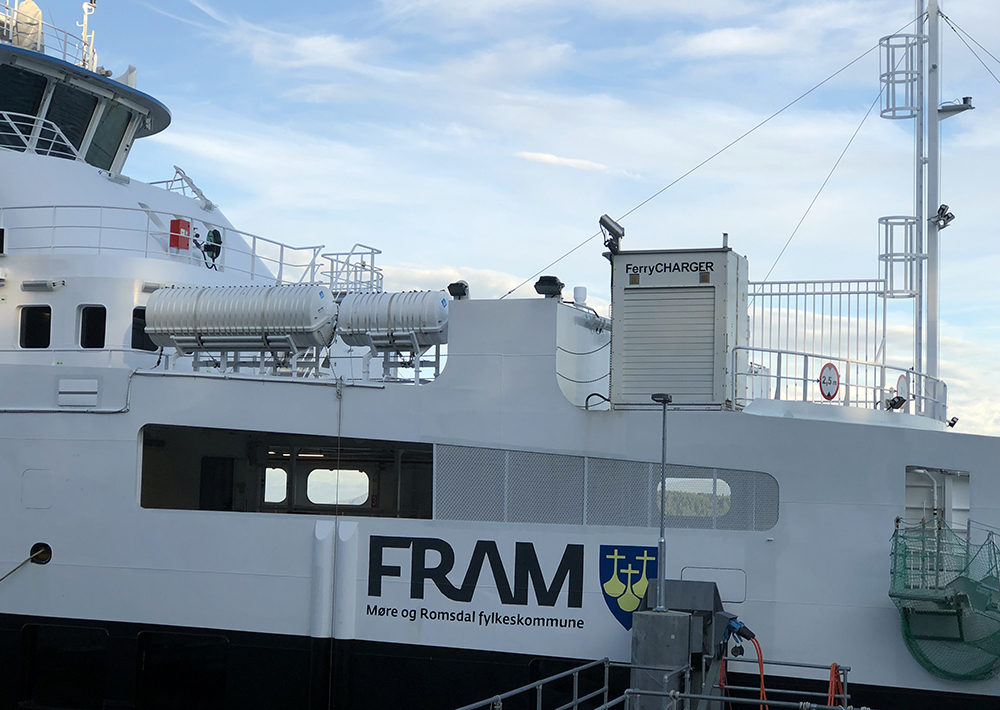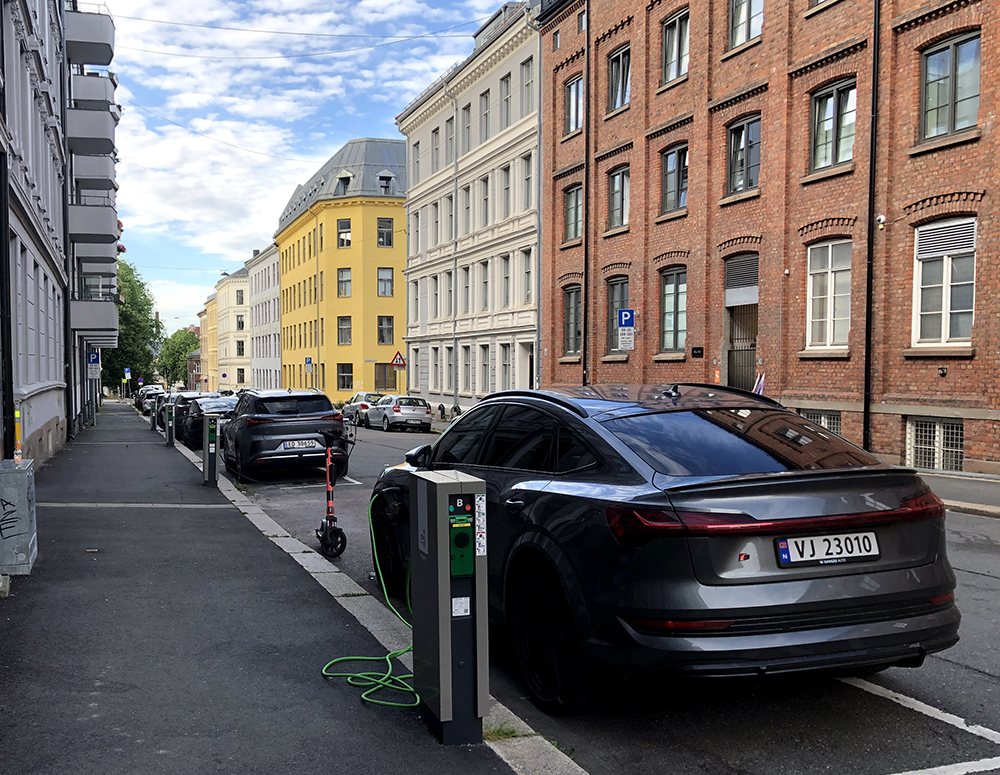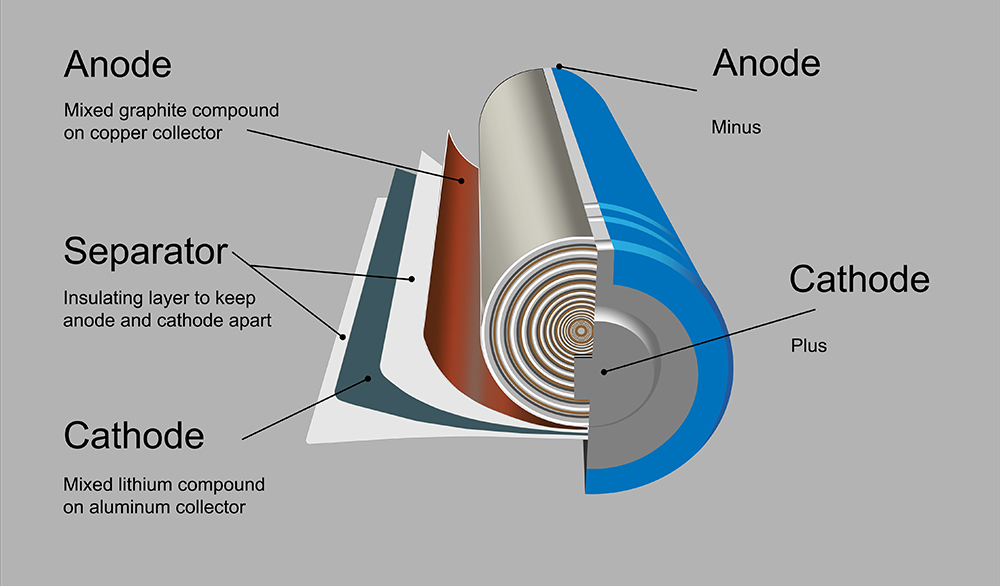[ad_1]
Norway is to EV-spotting what Costa Rica is to birdwatchers—you can count on seeing a vast variety of species, including some that are very rare elsewhere in the world. On a recent visit, I added several EV models to my life list.
On the streets of Oslo and Bergen, I saw tons of Teslas, loads of LEAFs and many Mustang Mach-Es (all three of these models can be seen in service as taxis, alongside every version of the Prius). I saw Audi e-trons, Jaguar I-Paces, Porsche Taycans, VWs both old (e-Golf) and new (ID.3 and ID.4), BMW i3s, electric Hyundais and Kias. I saw European models that aren’t sold in the states, including the popular Renault Zoe and fairly new models from Peugeot and Skoda. I saw older EVs that are mostly extinct elsewhere (the Mitsubishi i-MiEV and its Peugeot and Citroën counterparts), and a few new models that are just starting to appear on US shores, such as the Mercedes EQB, the Polestar and—grab the binoculars!—an Xpeng, one of several Chinese cars now on sale in Norway (including models from MG BYD, NIO and Golden Dragon).
Electric buses are everywhere, and so are electric delivery vans such as the Nissan e-NV200.

EVs aren’t just seen on the streets. At Oslo airport, a substantial portion of the ground support equipment appeared to be electric. Electric pleasure boats plied the waters of Oslo’s beautiful fjord.
Reaching the remote island of Smøla required taking not one but two car ferries. Both were electric (with backup diesel engines that apparently didn’t need to be switched on for our voyages), but each used a different charging setup. Each of these systems had a sort of charging tower on the dock that automatically connected to a receptacle on the vessel, but one was on the side of the ship and one was mounted at the end near where the cars drove on. In both cases, the height of the charging plug can be adjusted to account for the tide.

Larger vessels are electrifying too. We took a cruise ship of the famous Hurtigruten line from Kristiansund to Bergen, and one of the officers explained to me that it is a plug-in hybrid—enormous batteries take some of the strain off the diesel engines. He said that the retrofitted system, combined with various efficiency improvements to the propellors and other components, reduces CO2 and nitrous emissions by up to 90%.
I didn’t take any air samples, but I certainly noticed that, like an electric passenger car, an electrified ship delivers a more pleasant ride. Earlier in this trip, I took an old-fashioned car ferry to Corsica (see my account of our Tesla road trip), and it belched clouds of black smoke at all times (as well as generating deafening noise and bone-shaking vibration). Aboard Hurtigruten’s hybrid Kong Harald, the only evidence that the diesels were running was a subdued hum and a shimmer of hot air escaping from the stacks.
These ships make fairly frequent stops at ports along the coastal route, and they generally plug into shore power when they dock. Some may be surprised to learn that very few of the world’s passenger ships do so. Most run their diesel engines the whole time they’re in port, like an inconsiderate delivery driver idling his engine, and spew massive amounts of pollution into nearby neighborhoods.

There’s much angst in the EV world over the Plight of the Drivewayless—the baleful bane of city dwellers who aren’t able to install EV charging at their homes. The example of Oslo may indicate that this isn’t as big a problem as many fear. Like most cities, Oslo has block after block of medium-density apartment buildings, most of which have no garages or assigned parking spaces. In recent years, the amount of on-street parking in the city center has been reduced, and the result is that central Oslo is a walker’s delight, with the quietest and most pleasant streets of any city I’ve visited. Where there is on-street parking, there’s a generous number of public chargers. Large parking garages, also well-equipped with chargers, are located around the city.
For all I know, Oslo residents may complain about the charging situation, but it certainly hasn’t dampened their enthusiasm for driving electric. By my informal, unscientific count, around half the cars driving around Oslo were pure EVs (as for PHEVs and hybrids, I didn’t even bother counting them). Naturally, the ration was lower in rural regions. The official stats tell us that 71 percent of cars sold in Norway in July were pure EVs, and 12 percent were PHEVs. The most popular model was the Skoda Enyaq.
[ad_2]
Source link




